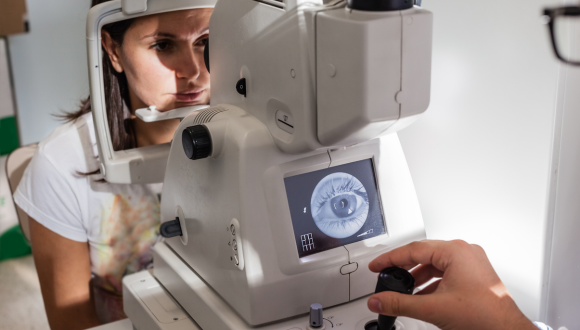Molecular mechanisms behind inner retinal remodeling in photoreceptor loss and the future of vision restoration in blindness
The Dept. of Physiology and Pharmacology cordially invites you to a departmental seminar
Wednesday, September 13th 2023
LECTURER
Dr. Michael Telias (MSc, PhD)
Flaum Eye Institute & Del Monte Institute of Neuroscience, University of Rochester
School of Medicine and Dentistry, NY.
TITLE
“Molecular mechanisms behind inner retinal remodeling in photoreceptor loss and the future of vision restoration in blindness”
The seminar will take place in room 527
Medicine building
13:00
Abstract:
Dystrophy of rods and/or cones is a leading cause of low-vision and blindness. Some of these diseases are inherited, while others are caused by yet unknown etiologies. In all cases, the death of the photoreceptors in the outer retina unleashes a series of dramatic pathophysiological changes in the surviving inner retina. This form of maladaptive plasticity affects the integrity and structure of neuronal circuits between inner retinal neurons, degrading signal processing of retinal light responses, leading to vision loss, including poor visual acuity and contrast sensitivity in mouse models. Blocking the activation of the retinoic acid receptor (RAR) in the ganglion cells of mice with inherited photoreceptor degeneration mitigates remodeling, reducing pathological neuronal hyperactivity and improving image-forming vision in-vivo. However, it is unclear how RAR-dependent signaling elicits neuronal remodeling and whether its underlying mechanisms are shared or differential across subtypes of inner retinal neurons. Our studies show that remodeling is mediated by the downstream activation of genes that promote neuronal firing through secondary cascades, including the transmembrane ionotropic purinergic 2x7 receptor (P2X7) and the hyperpolarization-activated cyclic nucleotide-gated channel 1 (HCN1), affecting specifically the Off-ganglion cells. In addition, while the role of RAR as the molecular trigger behind remodeling in animal models of inherited retinal degeneration has been confirmed by multiple lines of evidence, there is only circumstantial and indirect evidence that remodeling occurs in human retinas with idiopathic photoreceptor loss (i.e.: age-related macular degeneration and similar), and no evidence that it is driven by RAR. Here we show novel and preliminary lines of study attempting to overcome this major roadblock to translate the findings in mice to humans, with the goal of using anti-remodeling strategies in the clinical setup.


